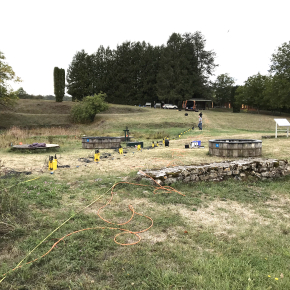Séminaire
Revealing the statistics of extreme events hidden in short weather forecast data: A case study of Sudden Stratospheric Warmings
Ed Gerber (NYU)
Séminaire du LMD à l’ENS.
Description
Climate change will be felt primarily through changes in extreme weather: intense storms, precipitation events, and temperature anomalies. Extreme events in the stratosphere, namely Sudden Stratospheric Warmings (SSWs), are known to impact surface weather extremes, driving an equatorward shift of the storm tracks and associated jet streams. Efforts to quantify potential changes in SSWs in response to anthropogenic forcing, both their frequency and their surface impact, however, have been hampered by the large uncertainty in the observational record. The problem becomes more acute for the most extreme SSWs, which are known to have a stronger surface impact. A once-in-a-century event takes, on average, 100 years of observations or simulation time to appear just once. This is far beyond the typical integration length of our most accurate weather models, which provide the best representation of stratosphere-troposphere coupling, so the task is often left to cheaper, but less accurate, low-resolution or statistical models. One reduces the sampling error (aleatoric uncertainty) at the expense of increased model error (epistemic uncertainty).
In this work, we propose methods to extract climatological information from subseasonal forecast ensembles. Despite being short in duration, weather forecast ensembles are produced multiple times a week, collectively, adding up to thousands of years of data. Using ensemble hindcasts produced by the European Center for Medium-range Weather Forecasting (ECMWF) archived in the subseasonal-to-seasonal (S2S) database, we compute multi-centennial return times of extreme SSW events. Consistent results are found between alternative methods, including basic counting strategies and Markov state modeling. By combining different trajectories together in a statistically rigorous way, we obtain estimates of SSW frequencies and their seasonal distributions that are consistent with reanalysis-derived estimates for moderately rare events, but can be extended to events of unprecedented severity that have not yet been observed historically. The same methods hold potential for assessing extreme events throughout the climate system, beyond the example of stratospheric extremes presented here, and could be adopted in the context of climate change integrations to quantify the impact of anthropogenic forcing on extreme weather.
Co-auteurs : Justin Finkel, Edwin P. Gerber, Dorian S. Abbot, and Justin Weare.
Informations supplémentaires
ENS – salle Lien Hua – E350 • 24, rue Lhomond 75005 PARIS






